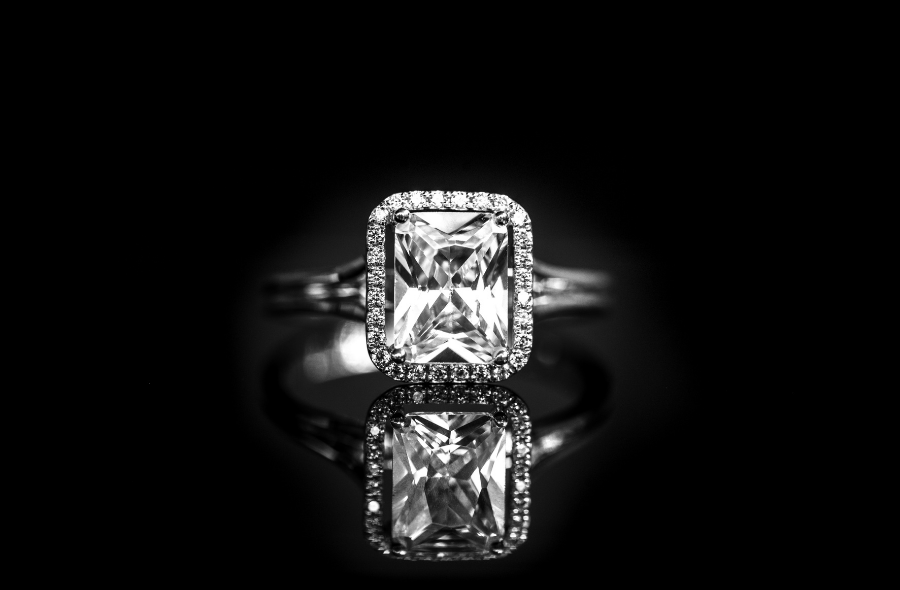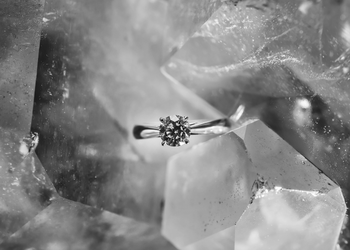
The so-called Millennial generation has, of course, its own norms. Generation Y , or the millennial generation —from the English millennial generation— , according to Wikipedia: it is the demographic cohort that follows generation X and precedes generation Z. There is no precision or consensus regarding the start and end dates of this generation; Demographers and researchers typically use the early 1980s as birth start years and the mid-1990s to early 2000s as birth end years.
It is a generation that is not afraid to break previous molds; in fact, they encourage such disruption. Millennials have changed purchasing habits and patterns across businesses, including the diamond industry.
In 2016, The Economist wrote a story about the Lesedi La Rona diamond and tweeted a question: "Why don't millennials buy diamonds?" The response provided a wide range of personal “why” information. However, the comments uncovered a universal trend, millennials are not interested in conventional weddings or engagement rings. There are several reasons why millennials don't buy diamonds in the traditional sense, and their interests, beliefs and styles have pushed them toward a new alternative to diamond jewelry and engagement rings: lab-grown diamonds. And, after reading about some of the benefits of these diamonds, this choice becomes much more understandable.
The reality of a post Covid-19 market
There are already many analyzes that point out the great unknowns and new challenges that retail will face in the short term, but several common elements can be seen. The exceptional nature of the current situation is intensifying an attitude among consumers that could be observed for quite some time.
We are faced with a thrifty consumer, who will think carefully about whether he needs that product or not and how to obtain it more affordably. Purely digital, before stepping into a physical store, you will carefully observe in the online channel where the product you need is and if through said channel, you can obtain it with guarantees, you will not hesitate to purchase it and finally with a marked component of ecological responsibility And social .
Online shopping and the fine jewelry sector
Online shopping is conquering the market by leaps and bounds, and the current confinement situation only accelerates this trend, resulting in growth expected within 5 years. The lack of freedom to leave the house and the convenience of being able to buy each product from home is imposed and companies offer more and more tools to be able to offer a superior purchasing experience, direct chats with advisors, deliveries in 24 hours or relevant content, are Some current examples or experiences based on virtual reality are other examples that we will soon see in a generalized way.
environmental friendly
In an article from early February 2018, Business Insider reported on the 10 most critical problems in the world, in the opinion of so-called millennials. The main concern? Climate change and/or destruction of nature. This concern has not gone unnoticed by companies around the world. And, although this is a generation divided between fast and affordable consumption, ignoring its consequences, and more responsible and sustainable consumption, the excess effort to which we are subjecting the planet and the undeniable consequences that we are already suffering, has helped lead an agenda even more "green" in the eyes of millennials.
So how do lab-grown diamonds come into play? Basically, it all boils down to two reasons: on the one hand, there is the impact on the environment of diamond mining and on the other, the amount of energy required for each type of diamond compared to the growth of created diamonds. in laboratory.
The extraction of one carat of rough diamond, depending on the extraction location, requires the movement of up to 250 tons of earth and 0.5 million liters of water. In comparison, for the growth of diamonds through technology the environment is not subjected to any mining practices and a considerably smaller amount of energy is also necessary, with some companies already existing that use clean and absolutely sustainable technologies.
Ethical
It is true that in some countries such as Botswana for many years the diamond sector has brought prosperity to the region where these diamonds are extracted, but it is no less true that this is not always the case and that the diamond is a natural resource of the that large corporations take advantage without there being an equitable distribution. The diamond sector is a monopoly run by a few stakeholders who control both supply and price.
Although the Kimberley Process exists to prevent malpractice and has good intentions to help eliminate some immoral practices, the reality is that it is not as effective as would be desired and that it only addresses diamonds originating from affected places. by wars (conflict diamonds or blood), but leaves other non-legal practices such as money laundering, among others, uncontrolled.
The only way to ensure that your diamond is 100% ethically sourced is to purchase a lab-created diamond .
Affordable
Many of the old-school traditions surrounding engagements and weddings have slowly begun to fade as the new generation of couples emerges, the homogeneity of past generations giving way to a wide variety of options, both in the way They want to live their commitment, the type of couples or the way they want to celebrate the commitment. Today more than ever, the economic weight of the decision to formalize a commitment is very high and more and more people are opting for different and more affordable solutions, which is why purchasing an engagement ring is increasingly a decision that is being declined by its high cost.
The created diamond is a unique opportunity for consumers when they want to get more for less, because we all know that size does matter. You'd expect a diamond with an ethical edge to cost more, right? But with lab created diamonds, this is not the case!
Lab-created diamonds can be 30-50% less expensive than mined diamonds . So what does that mean exactly? A bigger diamond!
Millennials are known for changing social norms, and they are no different when it comes to diamonds. Millennials' diamonds are lab-created diamonds. As a generation with a strong desire to make a difference in our world, they are doing everything they can to leave this world a better place...including purchasing conflict-free engagement rings, jewelry, at a more reasonable price.
Sergio Eduardo Murcia
CEO
MIMOKE
ETHICAL JEWELRY



